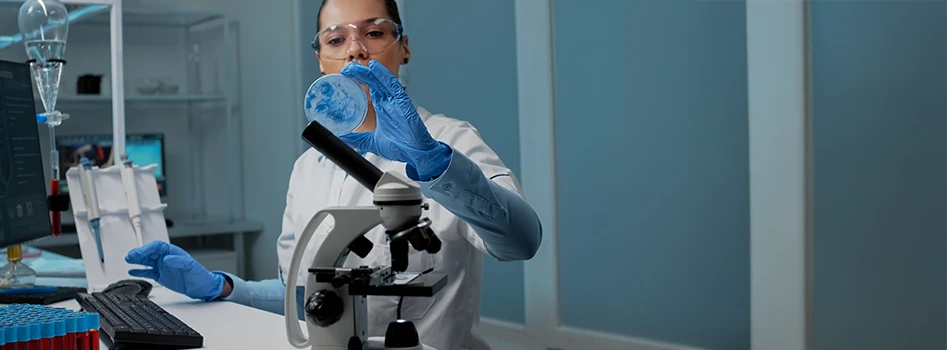Embryo culture systems are one of the most important parts of in vitro fertilization, commonly known as IVF. These systems create a safe and supportive environment outside the human body where embryos can grow before being transferred to the uterus. If you are a student or an aspirant in the field of embryology or fertility care, understanding these systems is very important, as they allow you to provide the right treatment and care for couples undergoing IVF treatments, so continue reading!
What are embryo culture systems
Embryo culture systems are specially designed laboratory setups that help and allow embryos (fertilized eggs) to grow in conditions that are controlled for risk-free development. Unlike natural conception, in the IVF process, the development has to happen in the lab. So, these culture systems will act like an artificial womb that maintains the right temperature, pH, gases, nutrients, etc. that embryos need to survive and grow. Without these culture systems, it would not be possible to study embryo development or help couples facing infertility.
The process of embryo culture
Embryo culture happens right after fertilization, once an egg and sperm are combined. This results in the embryo dividing and developing, in these stages:
Fertilization and early stages
After fertilization, the zygote starts dividing. One single cell becomes two cells, then four, then eight, etc. These divisions in the embryo are called cleavage stages, where the embryo is still very small but is multiplying very fast.
Morula formation
Mostly by day 3, the embryo is about 32 cells, and is at the stage called a morula. The cells are tightly stuck together, closely resembling a mulberry, hence morula.
Transition to blastocyst stage
Around day 6, the embryo forms a blastocyst. This has a fluid-filled structure, which is an outer layer of cells that will become the placenta. The inner cell mass that will develop into the baby. The blastocyst stage is very important in IVF because embryos are more likely to implant successfully in the uterus.
Types of embryo culture systems
Two-cell stage and blastocyst formation
Before advanced technologies, many embryos were cultured only up to the two-cell or four-cell stage and then transferred to the uterus. While some pregnancies were successful, the success rate was lower compared to transfers at the blastocyst stage.The failure of traditional methods to mimic the exact conditions inside the human body led to the design of better culture systems.
Sequential culture systems
Sequential culture systems provided different media at different stages of embryo development. For example, cleavage-stage embryos get one type of nutrient-rich medium, while blastocyst-stage embryos get another, which closely mimics what naturally happens inside the fallopian tubes and uterus.
Co-culture systems
In co-culture systems, embryos are grown along with endometrial cells, which are supportive in the development stage. These cells release growth factors that help the embryo grow better, just like in the natural environment.
Assessing blastocyst development
Good quality blastocysts have a higher chance of implanting onto the uterus walls, leading to healthy pregnancies. Embryo assessment is very important in IVF as it results in live births.
Morphological assessment
This method looks at the shape, size, and structure of the blastocyst. A healthy blastocyst has a clear cavity/structure, a strong inner cell mass, and an outer cell layer.
Grading systems for blastocyst quality
Embryos are graded based on expansion, inner cell mass quality, and trophectoderm (trophoblast) appearance. Higher grades usually mean better chances of implantation.
Molecular and genetic assessment
In some cases, the embryos that look normal may have some genetic issues, which is when PGT (preimplantation genetic testing) is used to identify good-quality embryos.
Challenges in embryo culture and blastocyst development
Environmental factors
Embryos are highly sensitive to their surroundings, so any changes in light exposure, vibrations, or air quality shifts can affect their development.
Genetic factors
Not all embryos develop properly even in perfect lab conditions. Genetic abnormalities or risks in the eggs or sperm can prevent healthy blastocyst development, resulting in a failed IVF process.
Temperature and pH sensitivity
Embryos develop better at body temperature (37°C) and within a specific pH range. Any variation in this temperature or pH can damage the embryo.
Ethical considerations
Embryo culture includes ethical questions, like what happens to unused embryos? or how many embryos can be created? These are ethical issues that must be considered while a fertility specialist handles the embryos.
The future of embryo culture research
Innovative technologies in embryo culture systems
Artificial intelligence (AI) and machine learning are being used to analyze embryo images during development and predict which ones have the best chance of success.
Personalized embryo culture approach
Just as people have different health needs, embryos from different patients may benefit from personalized culture systems by tailoring conditions to individual infertility cases.
Impact on IVF success rates
With better systems and smarter embryo assessment tools, the future of IVF looks promising. More couples may achieve pregnancy, and fewer treatment cycles may be needed with advanced technologies.
Conclusion
All in all, embryo culture systems are the backbone of IVF as they provide a safe environment for embryos to grow until they reach the blastocyst stage. From early cleavage to blastocyst formation, each stage is carefully monitored and supported through advanced culture systems.
If you are curious to learn more about how embryos develop in culture systems and how blastocysts are formed, MOMSOON Academy offers a wide range of courses covering clinical embryo development and ART for fertility care. Contact MOMSOON Academy today to learn more about our embryology courses.






